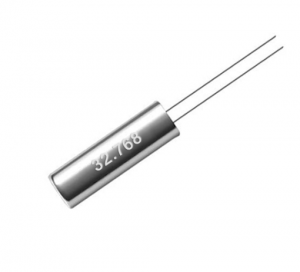All about quartz crystal- What is 16 MHz quartz crystal?
How to use the power of quartz crystal- What is 16 MHz quartz crystal?
Quartz is the second-most abundant mineral on Earth, behind iron. Quartz is SiO2. You can find it in rocks and boulders, clusters, double-terminated points, laser wands, singing crystals, single points, twin flame, generators, milky quartz, spirit quartz, geodes, record keepers, enhydros, transmitters, Dow formations, Faden, phantom and Isis crystals, self-healing, giant Earth Keepers, and more.

Working with quartz offers you unrestricted mobility in all of your movements:
Quartz:
There is a natural process that takes place in the cracks and fissures of rocks that results in the production of quartz crystals. Depending on the kind of rock, it is possible to find it in sedimentary rocks, metamorphic rocks, or igneous rocks. Raw quartz can have an appearance that is more opaque or more see-through. Both of these appearances are possible. Even though the second form has more value, many people find themselves drawn to either version. This quartz is resistant to many environmental conditions and is very simple to keep and clean. If it becomes filthy, all you have to do to clean it is wash it with some gentle soap and water. There is no other way to clean it. Even though it is a more delicate gemstone, quartz is more challenging to work with than topaz. Keeping a physical distance between them while they are both being stored is the quickest and easiest way to reduce the likelihood of misunderstandings occurring. Quartz is a long-lasting stone that you may use, provided it is handled with the utmost care and respect.
Clear quartz is the most powerful:
The existence of Sacred Geometry on a Clear Quartz Point increases the point’s capacity to amplify vibrations, which is already relatively high because the end has six sides.
What is 16 MHz quartz crystal?
The 16 MHz Quartz Crystal has the prospective capacity of handling off-chip crystals running operation mode (3.5 ~ 40MHz), Fundamental (27 ~ 100MHz), and 3rd /5th Overtone.
The input reference is determined by using the output of the crystal oscillator, which is then delivered to the system’s phase-locked loop (PLL). Because of this, the oscillator design’s frequency, as well as its phase jitter, are excellent for use with USB. It is a direct result of the previous point. In this investigation, the on-chip oscillator design and crystal model parameters are determined by a combination of Simulation and the examination of empirical data. [Simulation] [Empirical data analysis] [On-chip oscillator design] [Oscillator on-chip] In addition to this, this technical information to help you choose a crystal operating at 16 MHz. You must strictly follow the crystal standard and the crystal PCB layout guidelines.
With the piezoelectric phenomenon, the crystal can generate its energy source. A piezoelectric element is included inside this crystal, coupled to two metal electrodes on each side. Each piezo element has the potential to resonate at a specific frequency within a predetermined range. The magnitude of the crystal element has a role in determining this. When electricity is delivered to the crystal, it causes it to vibrate at the frequency that corresponds to its resonance. As a result of this, it may be said that the crystal resonates. It has been possible to arrive at a highly accurate estimate of the frequency of the resonance. You may generate signals with a high frequency by using this approach, which directly results from the fact mentioned above.
How to Make the On-Chip Oscillator Run at 16 MHz:
When disabled it is necessary for the oscillator incorporated into the chip to have a crystal with an equivalent series resistance (ESR) of less than 20 ohms for it to work correctly. The Clock Source Control Register (CSCR) has to have the following values inserted into it so that the on-chip oscillator may operate at 16MHz. These settings are as follows:
- It is possible to change the importance of the CLKO SEL from 011 to another value. (CLK16M).
- When OSC EN is given the value of 1, the on-chip oscillator that operates at 16 MHz is activated.
- You can use the oscillator at 16 MHz as the clock source for the system PLL if you just set System SEL to 1 and save the changes.
- It is possible to activate the oscillator that is located on the chip by selecting CLKO SEL to output CLK16M. It will cause the oscillator to begin operating at 16 MHz.
- The testing findings indicate that the on-chip oscillators may be overworked while the crystal begins to use for the first time.
- After the 16 MHz oscillators have started to oscillate, you might send out the CLK16M signal to the system.
- If you are not using the CLKO signal, you may deactivate the CLKO pin by setting the CLKO SEL parameter to either 110 or 111. It is the case only if you are not using the CLKO signal.
Functioning of 16 MHZ Quartz crystal:
At this time, it is functioning at a frequency of 16 MHZ. Opto-Electronics provides a low-cost, efficient solution using their 16 MHZ crystal oscillator. A microcontroller or other integrated circuit (IC) that needs an external clock source to work effectively will often need a crystal to receive the clock pulses. The construction of an oscillator crystal involves placing two plates of conductive material between two slices of quartz crystal. It creates a sandwich. Receiving a voltage signal from quartz, amplifying it, and then sending it back to the circuit’s resonator is necessary to keep a crystal oscillator circuit in a state of stable oscillation. This process is known as “maintaining oscillation.” Because of the strong relationship between quartz’s elasticity, size change, and temperature, the latter’s effect on frequency may be relatively small. One further benefit that comes with using the material is this. It has a frequency of 16 MHz, a load capacitance of 20 pF, two pins, and a metal can. Additionally, it has a load capacitance of 20 pF.
Conclusion:
16 MHz quartz crystal works well for prototyping, but you’ll need to perform some hard math to get an ideal one when you’re ready to go into production, so your oscillation is perfect.
Now you know, “What is 16 MHz quartz crystal?”, Next, you may wonder where to buy it? CHINACHIPSUN provides the best quality quartz crystal. For example, their 16 MHz quartz crystal oscillator will let you communicate with your microcontroller. To check the products, visit our website!
